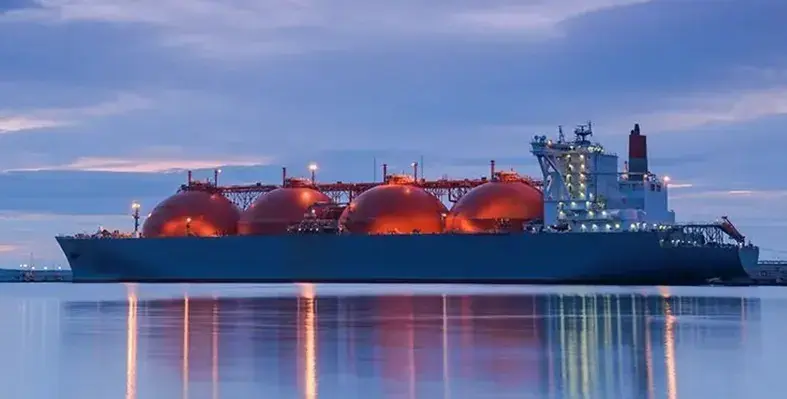Suresh Ramanujan, vice president - Qatar, Kuwait, Iraq & Jordan at Emerson argues that technology and partnership are imperatives for achieving sustainable energy security
Achieving energy security is not necessarily in conflict with ensuring sustainability. Focusing on energy security at the cost of sustainable practices can only lead to short-term gains. Striking a balance is crucial especially in the context of a global transition to a low-carbon future. While renewable energy sources continue to grow in importance and influence, the transition cannot happen overnight. Liquefied natural gas (LNG) has emerged as a vital component of this shift — not as a competitor to renewables, but as a complementary, lower-emission fuel that supports reliability where intermittent sources fall short. With up to 50% lower carbon emissions than compared to other fossil fuels, LNG is a viable transition fuel that provides reliable energy for countries where renewables alone cannot meet current demand.
As countries prioritise both energy access and climate action, LNG is increasingly being integrated into long-term energy strategies. National development plans and capital projects around the world are scaling up LNG infrastructure to meet projected demand through 2035 and beyond. Shell's LNG Outlook 2024 predicts that global LNG demand will grow by approximately 50% by 2040, driven by emerging economies like India and Vietnam that are prioritising lower-emission energy sources to fuel their development while meeting climate commitments.
This raises a critical question: how can we scale LNG responsibly while lowering its environmental impact?
Qatar’s experience provides a good example of how to strike this balance. The nation is undertaking a massive North Field Expansion project that will boost its LNG production capacity from 77 million tonnes per annum (MTPA) to approximately 126 MTPA by 2027.
What makes this expansion noteworthy is its parallel commitment to sustainability. Qatar is investing substantially in carbon capture technology, with plans to sequester 9 million tons of CO₂ annually by 2030.
Technology as an enabler of sustainable energy
Advances in process optimisation, emissions reduction, and energy efficiency are transforming how LNG facilities operate, significantly improving their environmental performance.
The Qatargas Jetty Boil-Off Gas Recovery Facility exemplifies this approach. By implementing advanced automation technology provided by Emerson’s LNG Solutions Center in Qatar, the facility eliminates flaring at Ras Laffan, recovering 600,000 tons of LNG annually while reducing greenhouse gas emissions by 1.6 million tons per year.
Technology partnerships like this will be beneficial to supporting the energy transition in Qatar, and elsewhere in the world. Through advanced control systems, optimisation software from AspenTech, and precision instrumentation and valve technologies, Emerson enables LNG operators to run safer, more efficient, and more reliable operations. These solutions not only help reduce emissions and optimise energy use but also ensure process consistency across the entire lifecycle of LNG facilities—from design and commissioning to maintenance and digital transformation.
Innovations and expertise gained from such partnerships will enable businesses to achieve sustainability and operational excellence; it will also empower local industries with tools to remain competitive in a rapidly evolving global market.
Developing local expertise to address transition challenges
Technology alone, no matter how sophisticated, cannot drive sustainable transformation without the human expertise to implement and optimise it.
Qatar's National Vision 2030 recognises this reality, emphasising economic progression through innovation, sustainability, and human development. Emerson’s LNG Solutions Center is supporting this vision by providing programmes that will cultivate local expertise needed to facilitate the country’s transition to a carbon-neutral future. This provides immersive training environments where engineers and technicians can develop proficiency with cutting-edge technologies before implementing them in operational facilities. They create spaces for collaboration between operators, technology providers, and academic institutions. And they function as innovation hubs where solutions to industry challenges can be explored, tested, and refined.
Beyond production: the entire value chain
A comprehensive approach to ensuring a balance between energy security and sustainability must consider the entire LNG value chain – from production and processing to transportation and utilisation.
In transportation, for instance, the foremost considerations include solutions for safe transfer of liquefied gas as well as carrier operations. These are essential for maintaining safety and environmental integrity. Accurate containment monitoring and custody technologies can help ensure safe transfer when loading or unloading LNG, while specialised carrier systems support safety, environmental compliance, and reliability for LNG carriers.
At the consumption end, technologies that optimise combustion processes, minimise methane slip, and support fuel switching in power generation and industrial applications help maximise the environmental benefits of choosing natural gas over higher-carbon alternatives.
LNG in a net-zero future
LNG has the potential to remain valuable even in a highly decarbonised energy system. A number of factors support this view. First, the integration of carbon capture and storage technology can dramatically reduce the lifecycle emissions of natural gas. Second, existing LNG infrastructure can be repurposed for transportation and storage of hydrogen energy when this resource becomes more mainstream or as green and blue hydrogen production gains wider adoption. Finally, the reliability and disposability of gas-fired power generation make it an ideal complement to intermittent renewable energy sources like wind and solar.
Without a doubt, the path forward will require continued innovation in technology, policy frameworks and regulations, as well as market structures and business models. The balanced approach advocated here considers both the immediate necessity of reliable energy access and the imperative of addressing climate change.









